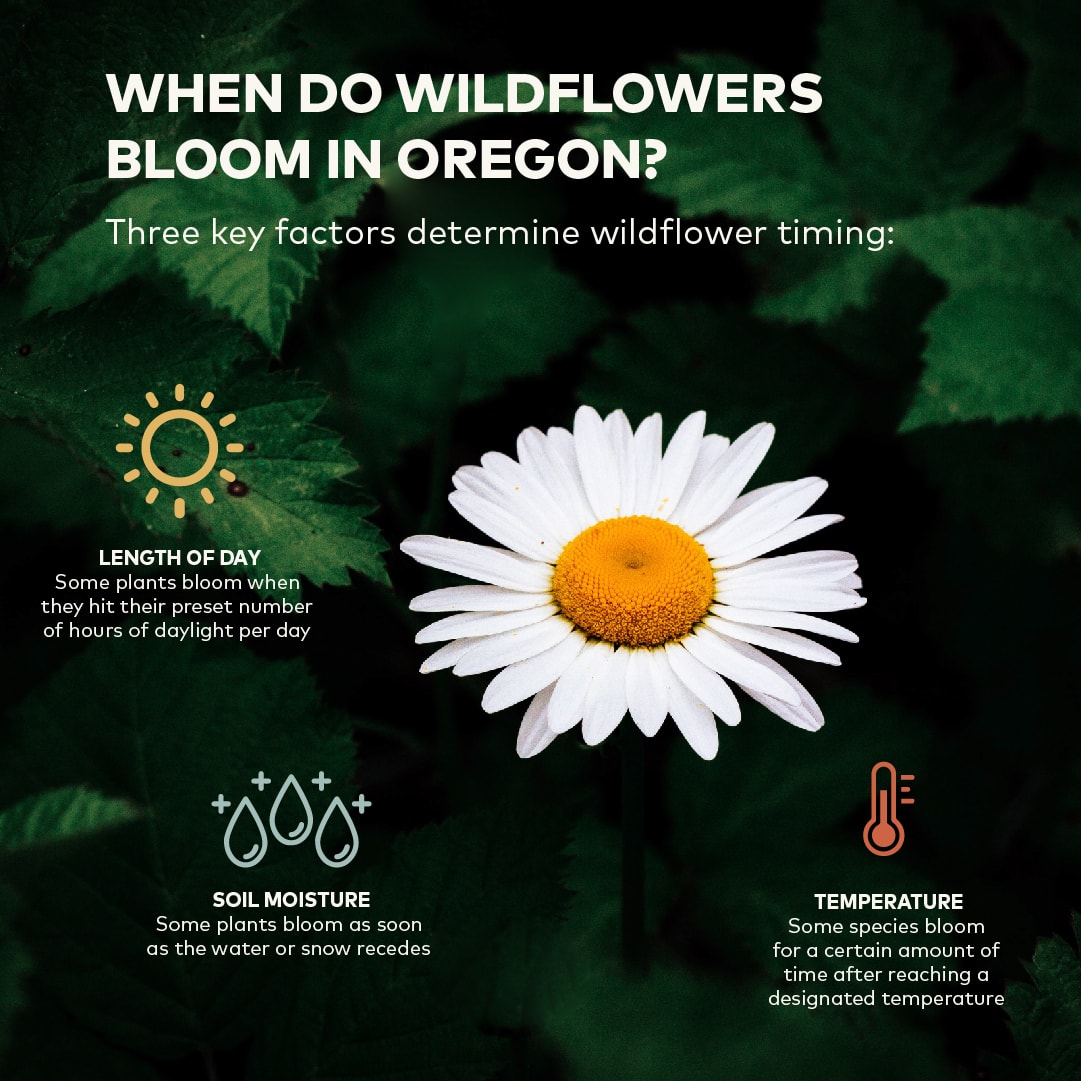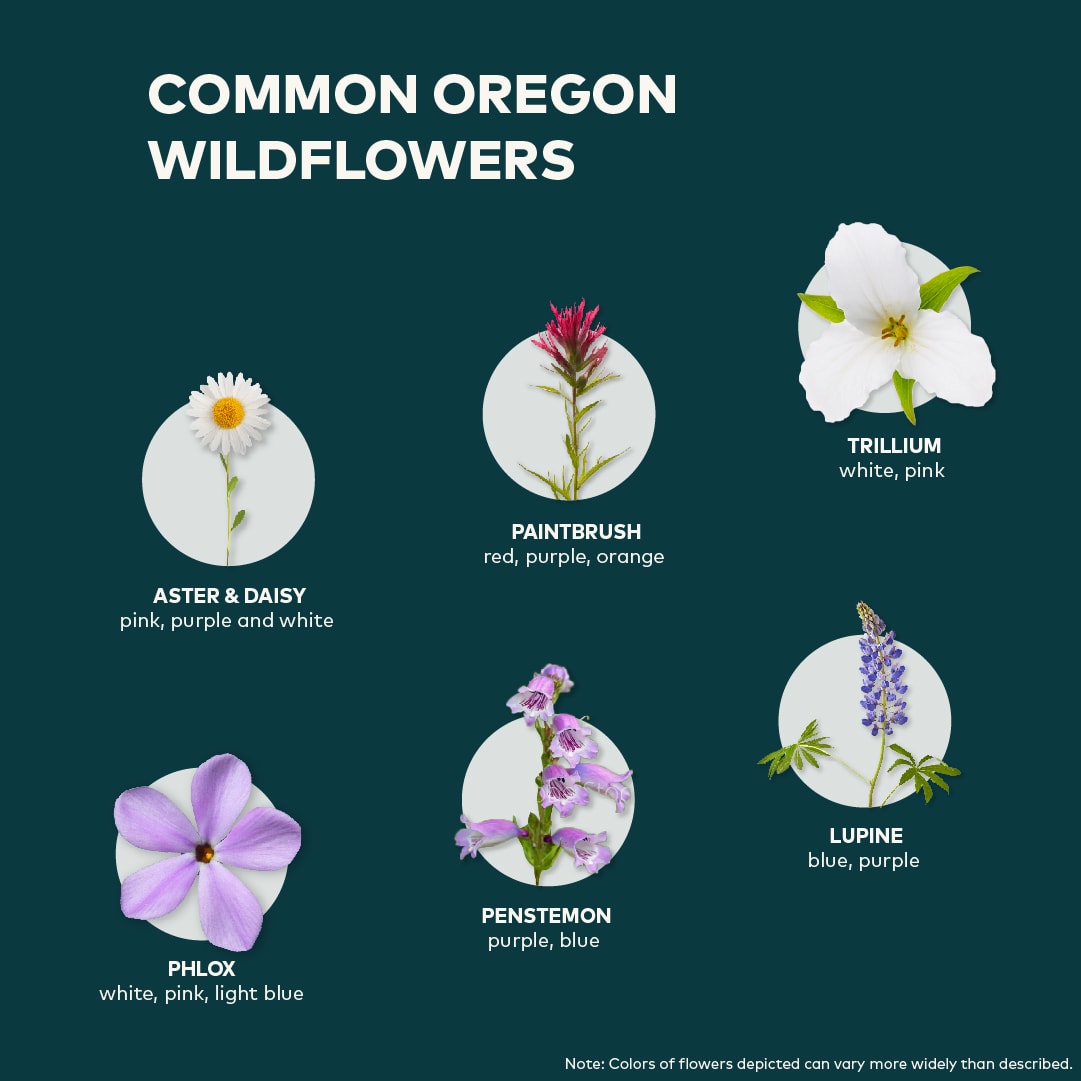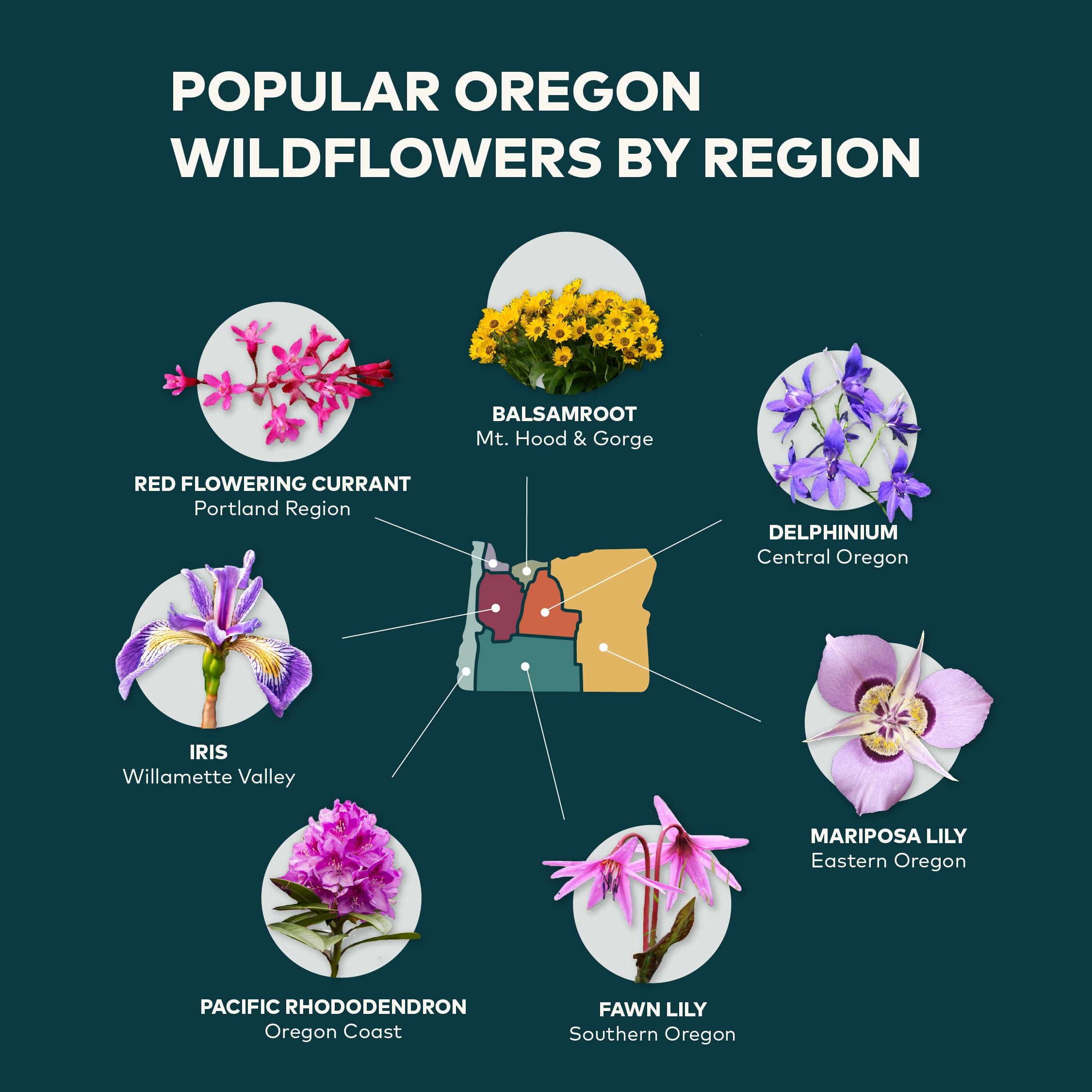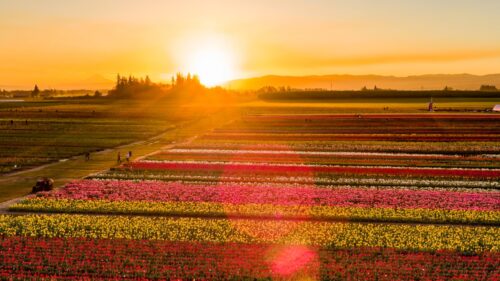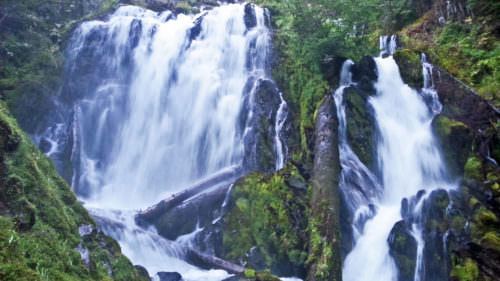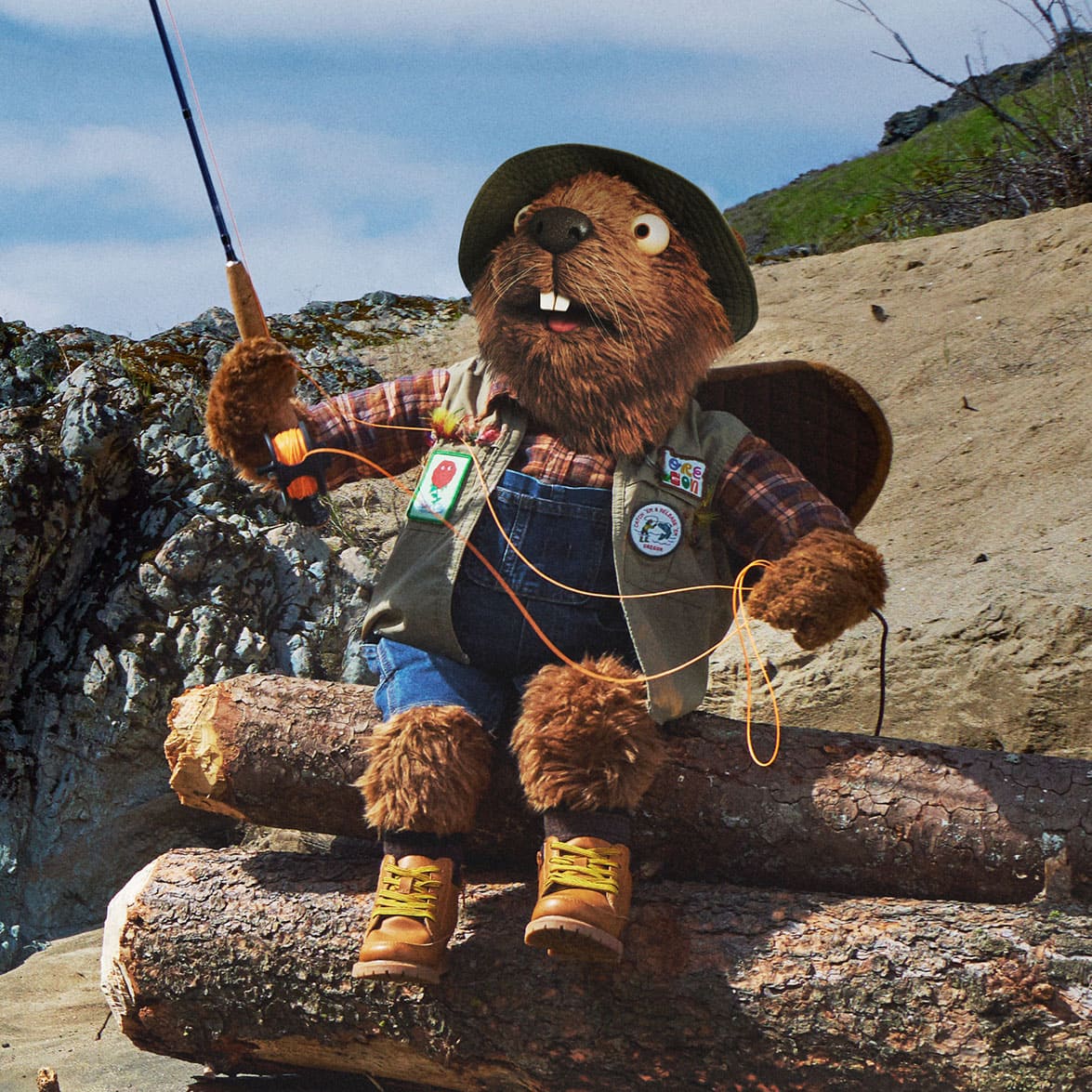From daisies and sunflowers to bear grass and trillium, Noel Bacheller knows his wildflowers. His job as botanist for the Oregon Department of Parks and Recreation is to help protect the state’s pristine areas from noxious weeds and other threats, and to keep natural habitats healthy. That means that he knows why wildflowers bloom, where and when they do, and why some are so elusive. Ready to learn more? Here’s our deep dive into the science of wildflowers, just in time for spring.
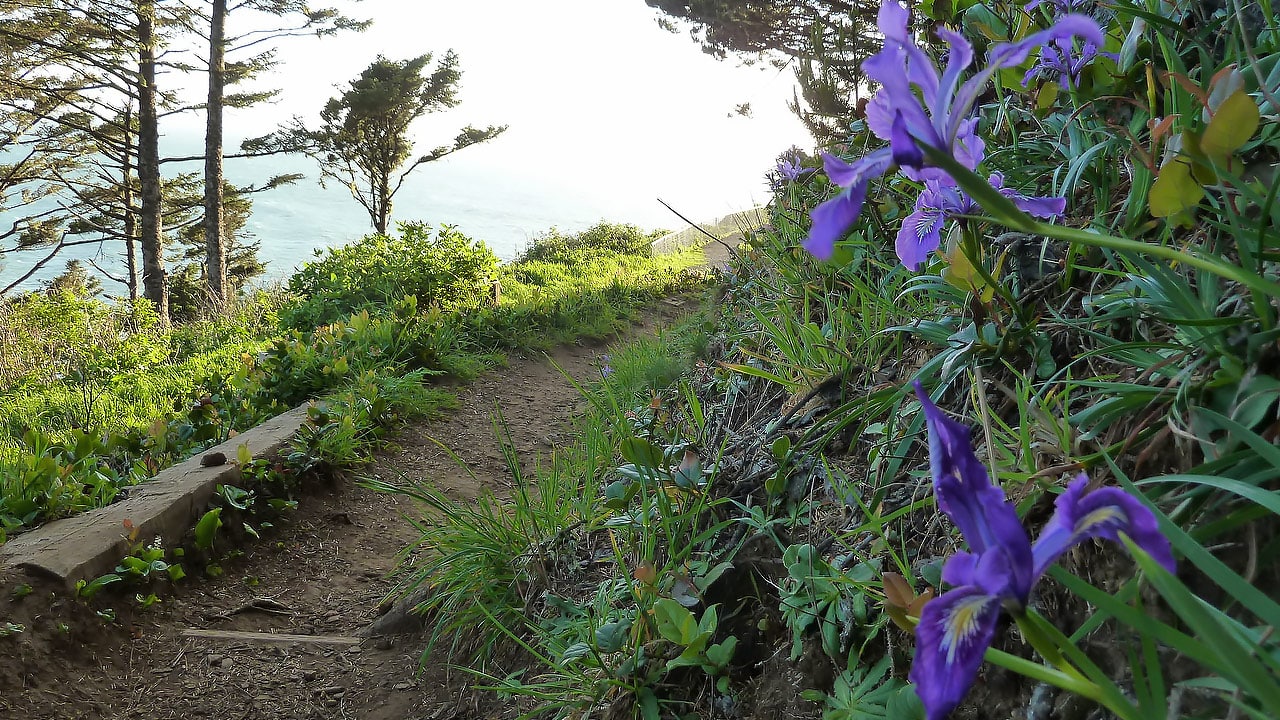
When Do Wildflowers Bloom in Oregon?
Some blooms begin in March and last for a small window, while others bloom later in the spring (April, May) or even summer (June, July). Of course, that all depends on where you are. Bacheller, who works at the state parks’ headquarters in Salem, says three key factors determine wildflower timing. One is temperature: Some species bloom for a certain amount of time after reaching a designated temperature. In other words, they’re triggered into flowering by temperature. Another factor is the length of day — when some plants hit their preset number of hours of daylight per day, they’re also triggered. Finally, some plants bloom according to the soil moisture and flower as soon as the water or snow recedes. Lucky for us, the broad window means we can enjoy a wide variety of wildflowers no matter what hikes we choose throughout the season.
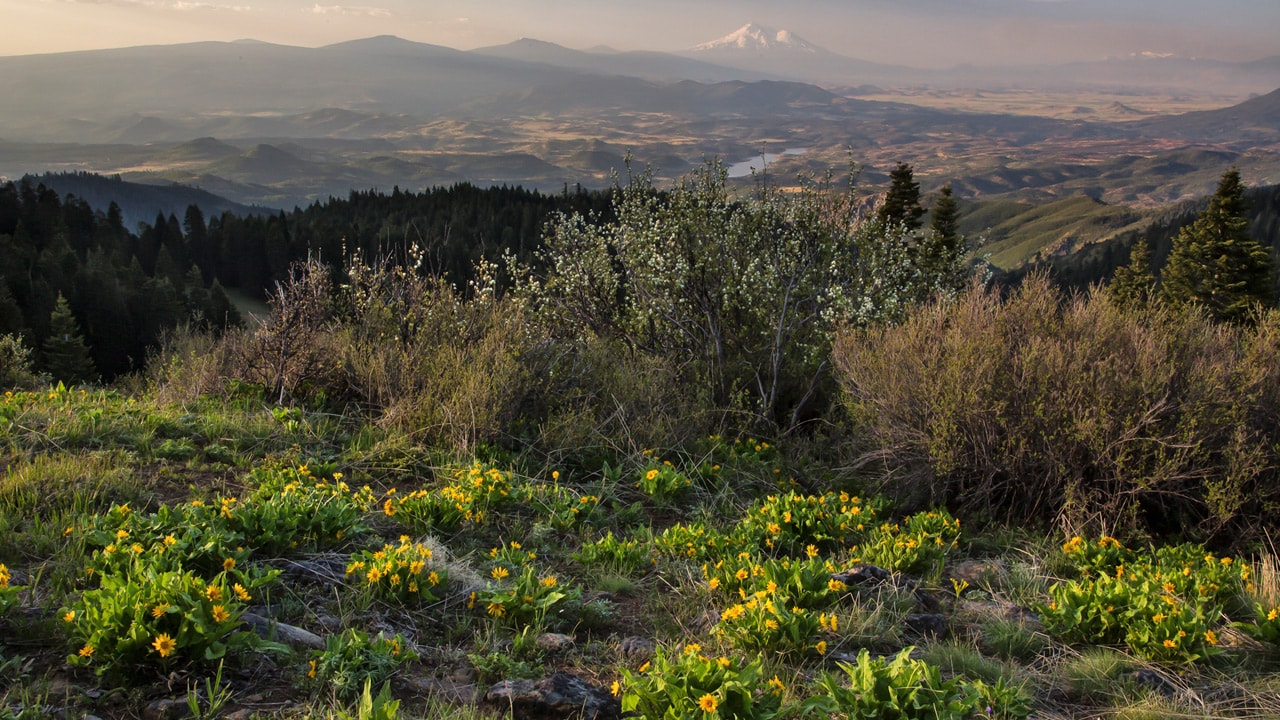
Where Do Wildflowers Bloom in Oregon?
Ah, the science of wildflower chasing. Some species are everywhere; others are incredibly specific, preferring a certain type of soil or a north-facing slope, for example. Some bloom only next to a certain fungus or occur only where their insect partners also occur — it’s just one of the mysteries of nature. “Rare plants are one of the ways we understand that ecology,” Bacheller says.
He notes that there are usually waves of blooms in each location. Early bloomers are replaced by different wildflowers at different times of the season. When exactly the wildflower progression starts depends on the location and the weather. For example, wildflowers in the eastern end of the Columbia River Gorge start to bloom in early March, so “hit it early if you want to see shooting stars, grass widows, Columbia desert parsley and other cool early stuff,” Bacheller advises.
The peak bloom wave moves westward in the Columbia River Gorge into late spring; then June sees a peak at Saddle Mountain State Natural Area, about 30 miles inland from Seaside (Clatsop County). The site is filled with rare plants and given the highest level of protection and recognition for natural habitats under the Oregon Natural Areas Program and Oregon Natural Heritage Act. Set out for a challenging trek filled with panoramic views and pops of color between May and July — from purple larkspur and shooting stars to orange poppies and tiger lilies.
Throughout the Willamette Valley, blooms continue through May and June, while the Cascade region peaks in July. Many other spots in the highest mountain meadows may see blooms through August due to a late snow melt. Some areas that get very dry in the summer will have their wildflower show wilt well before June. The trick is knowing what you want to see or when the peak bloom will be in that particular year and in that particular location. Check out sites like the independently run Oregon Wildflowers to stay posted on where and what blooms are peaking where during the season.
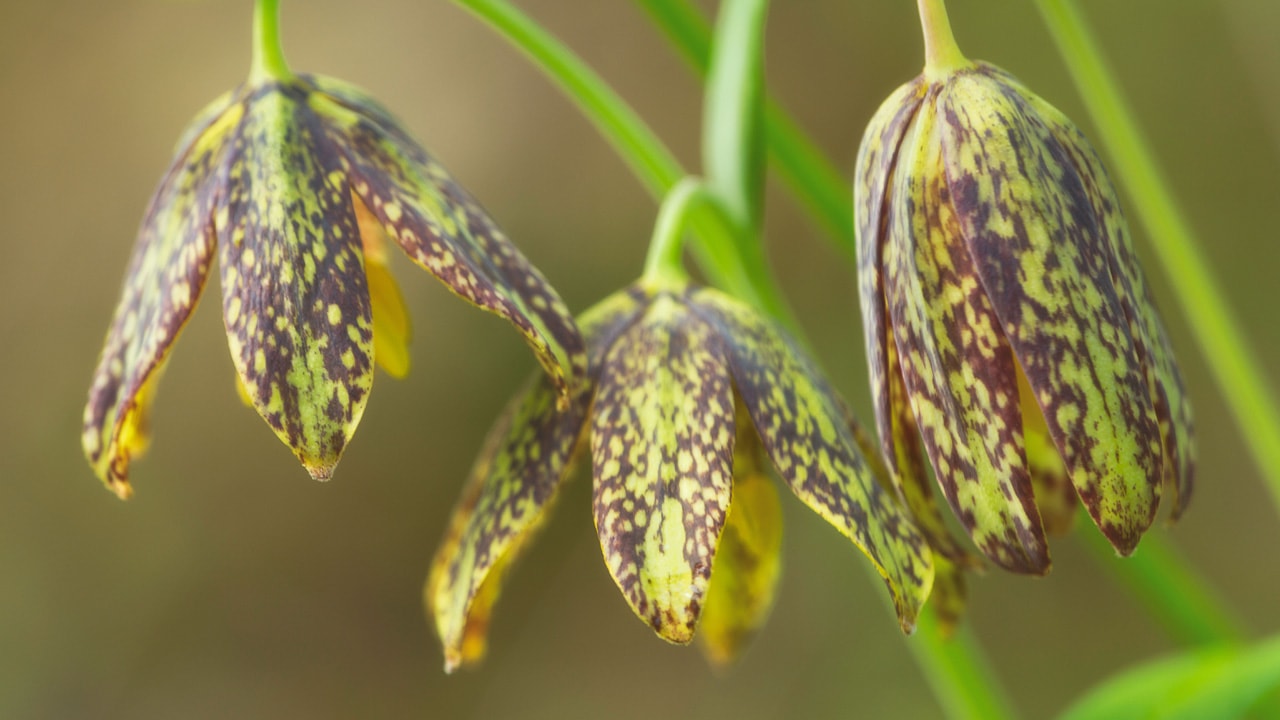
What Kind of Wildflowers Will I See in Oregon?
Oregon is home to an enormous array of wildflowers — many rare, many common. Some of the most ubiquitous are asters and daisies in various hues of pinks, purples and whites. The two species look similar, but you can tell them apart by looking closely. Daisies have just one row of petals, while asters are overlapped. Both grow in almost every type of environment, even backyards. Paintbrushes — in vibrant shades of red, purple, and orange — tend to grow in meadows. Trilliums are common in Western Oregon. Their three-petaled white or pink blooms are one of the early gifts of spring. In the western mountains and in some locations along the Coast, the delicate white bear grass is a unique species to find.
An avid hiker himself, Bacheller has his own favorite blooms. Lilies — and their fancier cousin, the fritillaria, sporting a checkerboard pattern on the petals — are quite the lookers. Another favorite is the adorable monkey flower, named for the “face” that can be seen in the asymmetrical flowers. The showy, tube-shaped beardtongues — in vibrant hues of pink and purple — are photogenic as well, and come in 46 varieties native to Oregon. You can find them along sheer basalt cliffs throughout the Cascade Range, including spots like Mitchell Point, just west of Hood River (Hood River County).
Here are some of Bacheller’s favorite wildflower-filled spots (call the ranger station or check the website before you to go ensure the sites are open):
- Near Sweet Home (Linn County): Iron Mountain, Cone Peak
- Near Corvallis (Benton County): Marys Peak, William L. Finley National Wildlife Refuge
- Near Eugene (Lane County): Mt. Pisgah, West Eugene Wetlands, Spencer Butte Trail
- Near Salem (Marion County): Silver Falls State Park
- Oregon Coast: Darlingtonia State Natural Site near Florence (Lane County)
- Southern Oregon: Rough and Ready Botanical Wayside and Eight Dollar Mountain Botanical Wayside near Cave Junction (Josephine County), Table Rocks near Medford (Jackson County)
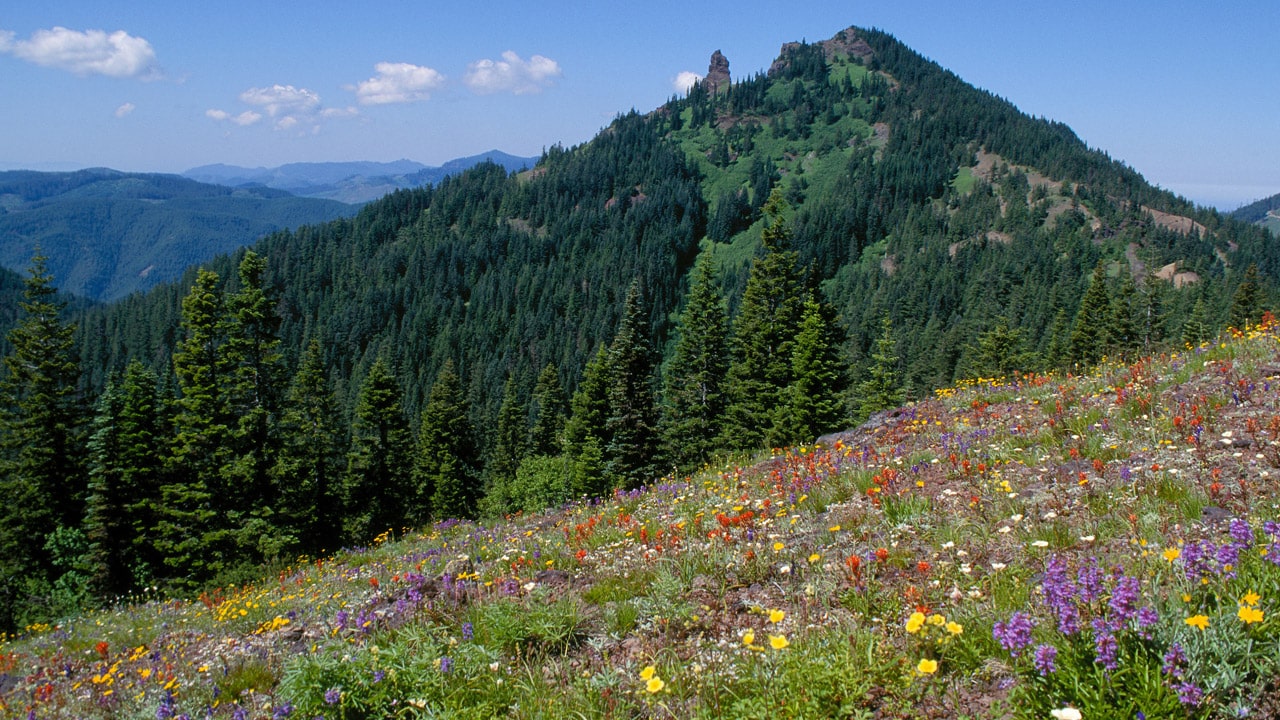
How to Get a Good Wildflower Photo
You hear it all the time: Stay on the trail. But why is that such a big deal? “When people leave the trail to see wildflowers more closely, that’s a problem,” Bacheller says, because people can accidentally step on something and crush it, endangering the species. That’s especially harmful when it’s a rare or threatened species. Disturbing and trampling a pristine wildflower meadow if you leave the trail also leaves it susceptible to growing weeds. And over time, the trail and trail-side vegetation become more and more degraded, and hikers will have to go farther and farther off trail to get the same pristine experience. If people stay on the trail, the good stuff will stay right next to it.
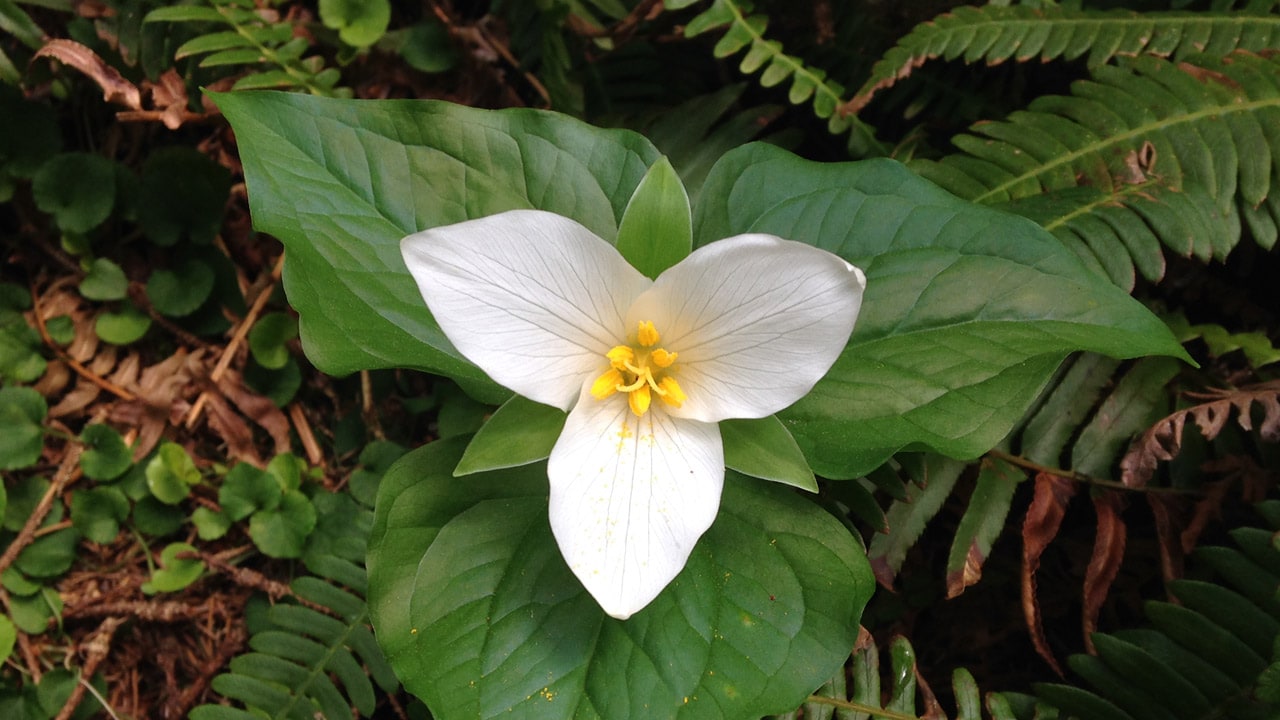
If You Go:
- Take care to use the boot brushes at trail entrances before and after hiking to remove seeds that can lead to invasive weed growth. Or better yet, clean your boots before you leave home.
- Stay on the trail.
- Don’t pick the flowers.
- Keep children and pets at bay when walking in sensitive areas. Always check specific pet guidelines for your trail.
- Consider joining a work party to help keep the area beautiful by removing invasive weeds. Check with your park’s website for details.
- Carry your 10 Essentials for hiking, including sunscreen, plenty of water (for pets too), snacks, a first-aid kit, a downloaded map and more.
